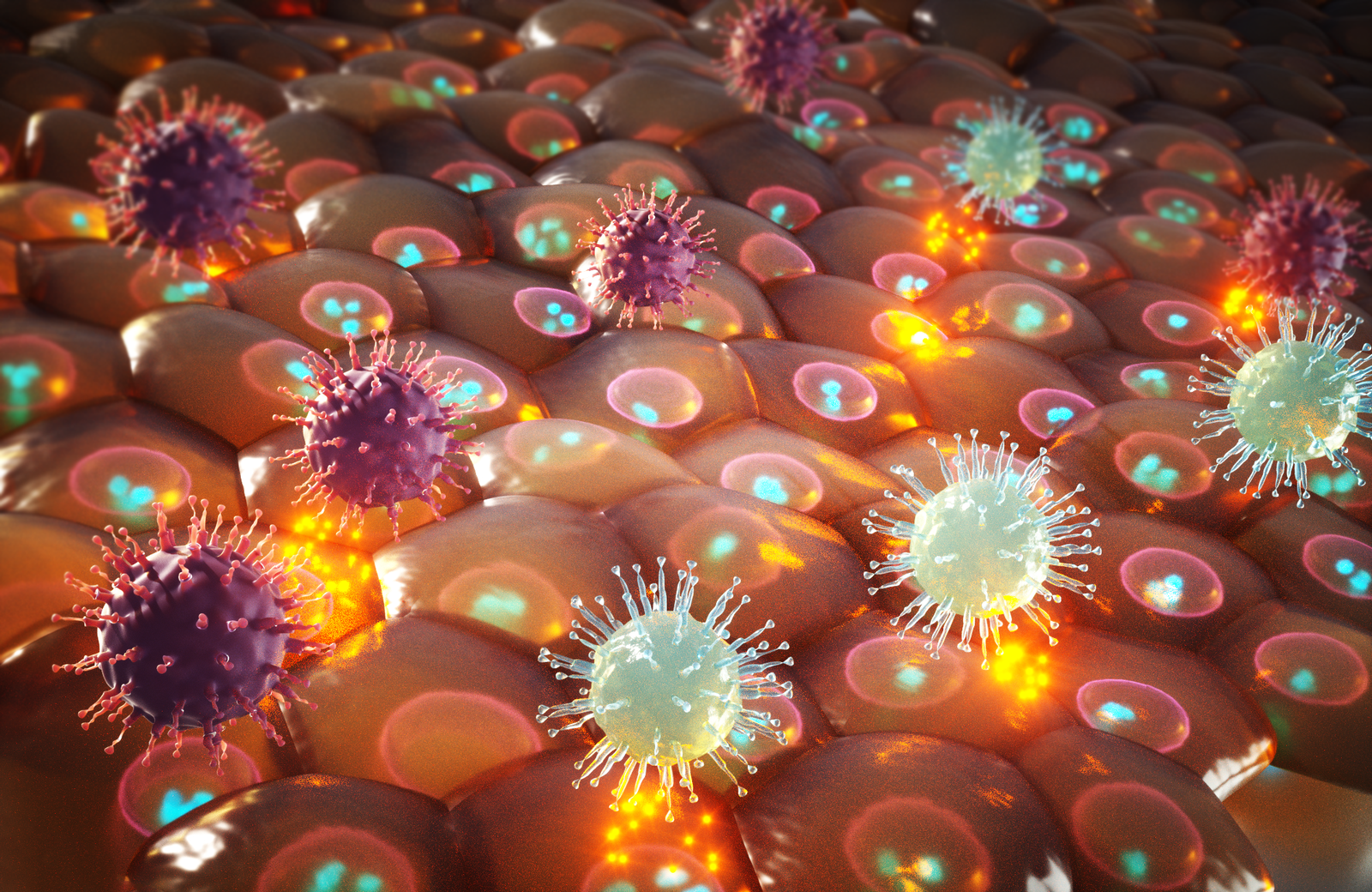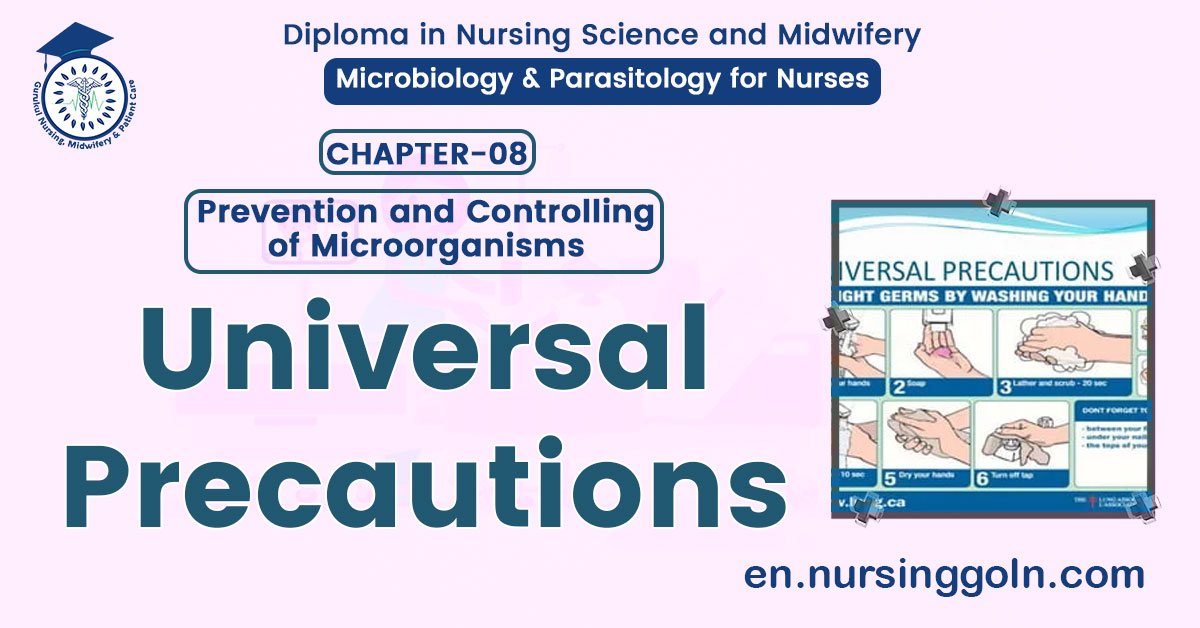Concept about Universal precautions – Basic microbiology, parasitology, and immunology; nature, reproduction, growth, and transmission of common microorganisms and parasites in Bangladesh; prevention including universal precaution and immunization, control, sterilization, and disinfection; and specimen collections and examination. Students will have an understanding of common organisms and parasites caused human diseases and acquire knowledge about the prevention and control of those organisms.
Concept about Universal precautions
Universal precautions were introduced by the Centers for Disease Control (CDC) in 1985, mostly in response to the human immunodeficiency virus (HIV) epidemic. Universal precautions are a standard set of guidelines aimed at preventing the transmission of blood borne pathogens from exposure to blood and other potentially infectious materials (OPIM). OPIM is defined by the Occupational Safety and Health Administration (OSHA) as:
The following human body fluids: semen, vaginal secretions, cerebrospinal fluid, synovial fluid, pleural fluid, pericardial fluid, peritoneal fluid, amniotic fluid, saliva in dental procedures, any body fluid that is visibly contaminated with blood, and all body fluids in situations where it is difficult or impossible to differentiate between body fluids;
Any unfixed tissue or organ (other than intact skin) from a human (living or dead); and
HIV-containing cell or tissue cultures, organ cultures, and HIV- or HBV-containing culture medium or other solutions; and blood, organs, or other tissues from experimental animals infected with HIV or HBV.
Universal precautions do not apply to sputum, feces, sweat, vomit, tears, urine, or nasal secretions unless they are visibly contaminated with blood because their transmission of Hepatitis B or HIV is extremely low or non-existent.
Universal precautions are the standard set of guidelines aimed at preventing the transmission of blood borne pathogens from exposure to blood and other potentially infectious materials.
Or
“Universal Precautions refers to the practice of wearing appropriate, non-porous medical articles such as gloves, goggles, gowns or face shields to prevent the exposure to potential blood-borne pathogens”.

It includes
- Care of the skin.
- Hand washing.
- Protective apparel.
- Procedure for safe handling of sharps.
- Procedure for safe disposal of sharps.
- Management of blood and body fluid spillages.
- Waste disposal.
Steps of Universal Precautions
- Education.
- Hand washing.
- Use of protective barriers & Personal Protective Equipment (PPE).
- Cleaning of contaminated surfaces.
- Safe handling / disposal of contaminated material.
Equipment
- Barrier gowns
- Mask
- Eyewear (goggles or glasses)
- Face shields
Purpose
These precautions are used in hospital-
- To prevent the transmission of infectious diseases to patients and health care workers.
Rules of Universal Precautions
- Approach all patients as if they are HIV or HBV infectious.
- Universal precautions apply to tissues, blood and other body fluids containing visible blood.
- Approach all blood, body fluids and tissues as if they are HIV or HBV contaminated.
- Approach all needles and sharps as if they have been contaminated with HIV or HBV.
- Blood is the single most important source of HIV, HBV and other blood borne pathogens in the workplace.
- Universal precautions also apply to tissues, semen, vaginal secretions, cerebrospinal fluid (CSF), synovial fluid, pleural fluid, pericardial fluid and amniotic fluid.
- Universal precautions do not apply to feces, nasal secretions, breast milk, sputum, sweat, tears, urine and vomit unless they contain visible blood. Precautions do not apply to saliva, except in dentistry.
- Know the limitations of the personal protective equipment we are using, when the equipment can protect us and when it cannot
- Do not recap needles.
- Do not break or otherwise manipulate needles.
- Place contaminated sharps in puncture resistant containers.
- Wash hands immediately after contamination or removing gloves

Strategies For Universal Precaution
- Use barrier protection to prevent skin & mucous membrane contract with blood & other body-fluids.
- Wear gloves to prevent contact with blood, infectious materials or other potentially contaminated surface or items.
- Wear face protection if blood or bodily fluid droplets may be generated during a procedure.
- Use protective clothing if blood or bodily fluid may be splashed during a procedure.
- Wash hands & skin immediately and thoroughly if contaminated with blood or bodily fluids.
- Wash hands immediately after gloves removed.
- Use care when using & handling sharp instrument.
- If you have sustained in exposure or puncture wound immediately flush the exposed area & notify the supervisor.
Microorganisms in the Hospitals
Bacteria
- Staphylococcus aureus
- Streptococcus pyogenes
- Enterococcus faecalis
- Peptostreptococcus
- Staphylococcus epidermidis
- Clostridium tetani, Clostridium perfringens
- E. coli
- Klebsiella
- Proteus
- Bacteroids
- Pseudomonas
- Pneumococci

Virus
- Respiratory viruses.
Fungus
- Candida albicans.
Read More….
